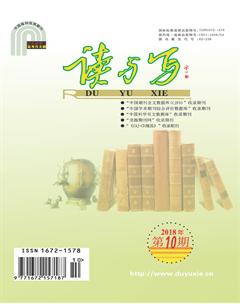Back—translation in Translation Teaching
Abstract:This paper aims to explore the practicability and effectiveness of the application of back translation to translate teaching by conducting a teaching experiment, so as to introduce an efficient teaching method to improve our translation teaching.
Key words:back-translation; translation teaching; experimental comparison study
中圖分类号:H315.9 文献标识码:A 文章编号:1672-1578(2018)10-0003-01
1 The Definition of Back-translation
Linguists and translators in China and abroad give back-translation different definitions in terms of their own understanding. Mark Shuttleworth puts forward that back translation is a process in which a text which has been translated into a given language is translated into source language[1]. Ivri suggests that back translation is a check on the semantic content[2].Li Xiaoqiong holds that back translation is to translate the translated version again, more specifically, to translate the translated version done by done the other people or yourself to the original language[3]. Based on the above experts definition, back translation, is usually a two-step process. Firstly, to translate the source text into a target text in a given language. Secondly, to translate the target text back into the source language. Therefore,back translation is usually called retroversion or backward translation.
2 The Application of Back-translation to Translation Teaching
In order to explore the effectiveness of applying back translation to translation teaching,we conduct an experimental comparison study based on two English major junior classes in Hengyang Normal University. To ensure accuracy of the comparison research results, a pre-test was conducted to select two most approximately-level classes from all of the junior classes majoring in English, one of which is the comparison class, and the other is the experimental class. Each class takes two translation classes per week and the whole research lasts for one semester(totally 16 weeks). The translation material chosen for both classes are the same, coming from authoritative translation text books.
The teaching material, the instructor and the total number of translation class hours remain the same for both classes, while the teaching strategy is different. In the comparison class, teacher takes the traditional way of teaching, introducing translation theories,explaining translation strategies and skills, arranging translation exercises for students and giving further lecture based on the common mistakes that they are prone to make, but without any back translation exercises.In the experimental classes,the translation theories, strategies and skills are also introduced during the class, while the differences lie in that back translation exercises are arranged for them. In the first week, they are asked to translate the source text into the target text, and a week later,when they cant memorize the source text clearly,they will translate the target text back into the source language. During this process, teacher need to collect their mistakes and carry on pointed explanation. After carrying on such a back translation training for one semester, we arrange a post-test for both classes to testify the effectiveness of back translation teaching method.
3 The Effectiveness of Applying Back-translation to School Translation Teaching and Learning
The post-test results show that students in the experimental class tend to achieve greater progress after one semesters study. While doing translating exercises, they tend to make less grammatical mistakes, have a greater awareness to employ varied translating skills and less tendency to write Chinglish or Europeanized sentences. Specifically, back translation help to enhance students tense awareness and word choice awareness, improve their skills in using passive\active voice, attributive clause, adverbial clause and noun clause. Moreover, it helps students to master varied translating skills, such as amplification, omission, repetition, conversion, extension and so on. Besides that, it also helps students to have a greater awareness of bilingual disparity and avoid writing Chinglish or Europeanized sentences. Therefore we may safely conclude that the teaching method of back translation that we adopt in the study is generally effective.
Bibliography:
[1] Shuttleworth,Mark & Moria Cowie.Dictionary of Translation Studies[M]. Shanghai: Shanghai Foreign Language Education Press,2004.
[2] Gentzler,Edwin. Contemporary Translation Theories[M].
Shanghai, Shanghai Foreign Language Education Press,2004.
[3] 張春柏.还原翻译练习:一种行之有效的翻译教学方法[J].山东外语教学,1997.(5):54-57.
作者简介:刘聪(1988-),女,湖南省衡阳市人,助教,硕士,研究方向:外国语言学与应用语言学。

